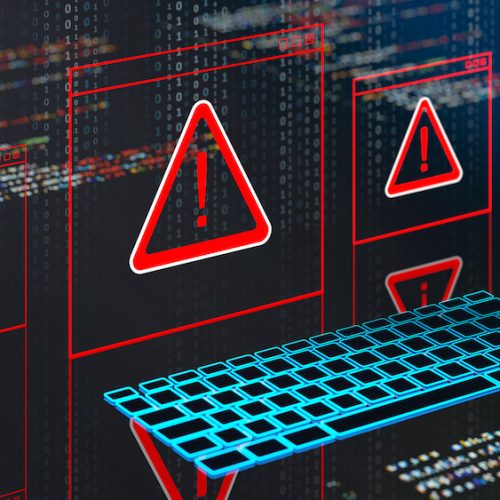The Strategic Implications of OKX’s $100M X Layer Ecosystem Fund for Crypto Builders and Investors

In Q3 2025, OKX’s $100 million X Layer Ecosystem Fund has emerged as a pivotal force in the Ethereum Layer 2 (L2) landscape, signaling a strategic shift toward long-term infrastructure investment and sustainable growth. This initiative, dwarfing competitors like Coinbase’s Base fund (which has allocated $60 million across 16 rounds), underscores OKX’s ambition to redefine the competitive dynamics of the L2 market [2]. By prioritizing scalable, affordable Web3 development and real-world asset (RWA) integration, OKX is positioning X Layer as a platform that balances technical innovation with economic incentives for developers and investors alike.
X Layer’s Technical and Economic Advantages
X Layer, built on Polygon’s CDK technology and upgraded in August 2025, boasts 5,000 transactions per second (TPS) and near-zero gas fees, making it a compelling alternative to Ethereum’s congested mainnet [2]. The platform’s deflationary strategy further strengthens its value proposition: a one-time burn of 65 million OKB tokens has locked the supply at 21 million, enhancing scarcity and utility [2]. This move has already driven a 340% price surge for OKB since the beginning of 2025, reflecting investor confidence in OKX’s vision [3].
The fund’s focus on long-term, vision-driven projects—rather than short-term token pumps—aligns with broader industry trends. As Ethereum’s L2 ecosystem matures, developers increasingly seek platforms that offer both technical robustness and financial backing. OKX’s $100 million commitment to infrastructure development, coupled with OKB’s role as the sole gas token, creates a flywheel effect: higher adoption reduces fees, which in turn attracts more developers and users [4].
Competitive L2 Market Dynamics
The Ethereum L2 space is fiercely contested, with Base and Arbitrum currently dominating key metrics. Base leads in Total Value Locked (TVL) at $4.32 billion and processes 50 million monthly transactions, while Arbitrum maintains a mature DeFi ecosystem with 400+ active protocols [1]. However, OKX’s X Layer introduces a disruptive variable: its aggressive funding model. By allocating $100 million upfront, OKX is not only matching but exceeding the financial incentives offered by rivals, enabling developers to experiment with high-throughput applications without cost barriers [2].
This strategy mirrors the broader industry’s pivot from speculative hype to sustainable growth. For instance, Ethereum ETF inflows in Q3 2025 reached $27.66 billion, with staking yields of 3–6% attracting institutional capital [3]. X Layer’s low fees and deflationary design position it to capture a share of this capital by offering a scalable infrastructure for DeFi, payments, and RWA projects.
Strategic Implications for Builders and Investors
For developers, the X Layer fund reduces the risk of building on a nascent platform. The $100 million allocation covers infrastructure grants, liquidity bootstrapping, and marketing support, creating a fertile ground for innovation [2]. Projects like Layer Brett (LBRETT), which achieved 25,000% APY staking rewards during its presale, demonstrate the potential for high-growth applications on L2s [2]. OKX’s focus on RWA integration further expands use cases, enabling real-world assets like real estate and commodities to be tokenized and traded on-chain [4].
Investors, meanwhile, benefit from OKX’s deflationary tokenomics and the fund’s potential to drive OKB’s utility. The 65 million OKB burn has already reduced supply, while the fund’s success could increase demand for the token as a gas and governance asset [2]. This dual mechanism—reduced supply and expanded use cases—creates a compelling value proposition for long-term holders.
Conclusion: A New Era for L2 Innovation
OKX’s $100M X Layer Ecosystem Fund represents more than a financial commitment—it signals a strategic reimagining of how blockchain infrastructure is built and funded. By combining technical excellence with aggressive capital allocation, OKX is challenging the status quo and offering a blueprint for sustainable L2 growth. For builders, this means a platform that prioritizes scalability and innovation; for investors, it means a token (OKB) with deflationary tailwinds and expanding utility. As the Ethereum L2 race intensifies, OKX’s approach could redefine what it means to win in the next phase of Web3.
**Source:[1] Arbitrum vs Base: Which Ethereum Layer 2 Will Dominate [https://levex.com/blog/arbitrum-vs-base-2025-layer-2-comparison][2] OKX Launches $100M X Layer Ecosystem Fund to Boost Blockchain Innovation [https://www.ainvest.com/news/okx-launches-100m-layer-ecosystem-fund-boost-blockchain-innovation-2508][3] Ethereum ETF: Why Institutional Adoption Is Surging in 2025 [https://www.okx.com/learn/ethereum-etf-institutional-adoption-2025][4] OKX Introduces $100 Million Fund for X Layer Ecosystem [https://intellectia.ai/news/crypto/okx-launches-100m-x-layer-ecosystem-fund]











